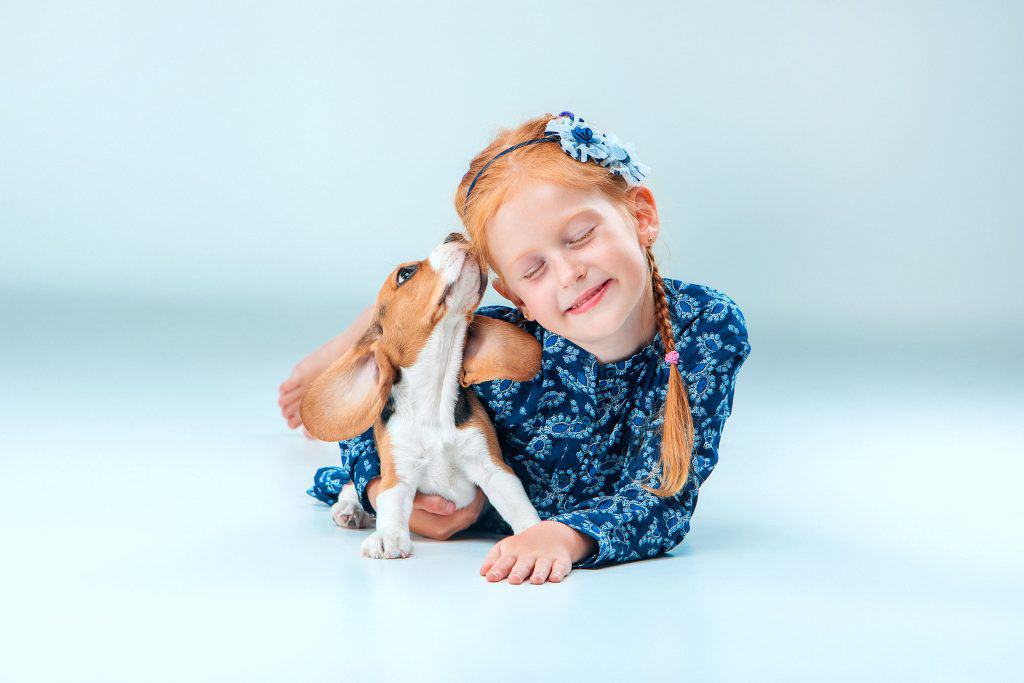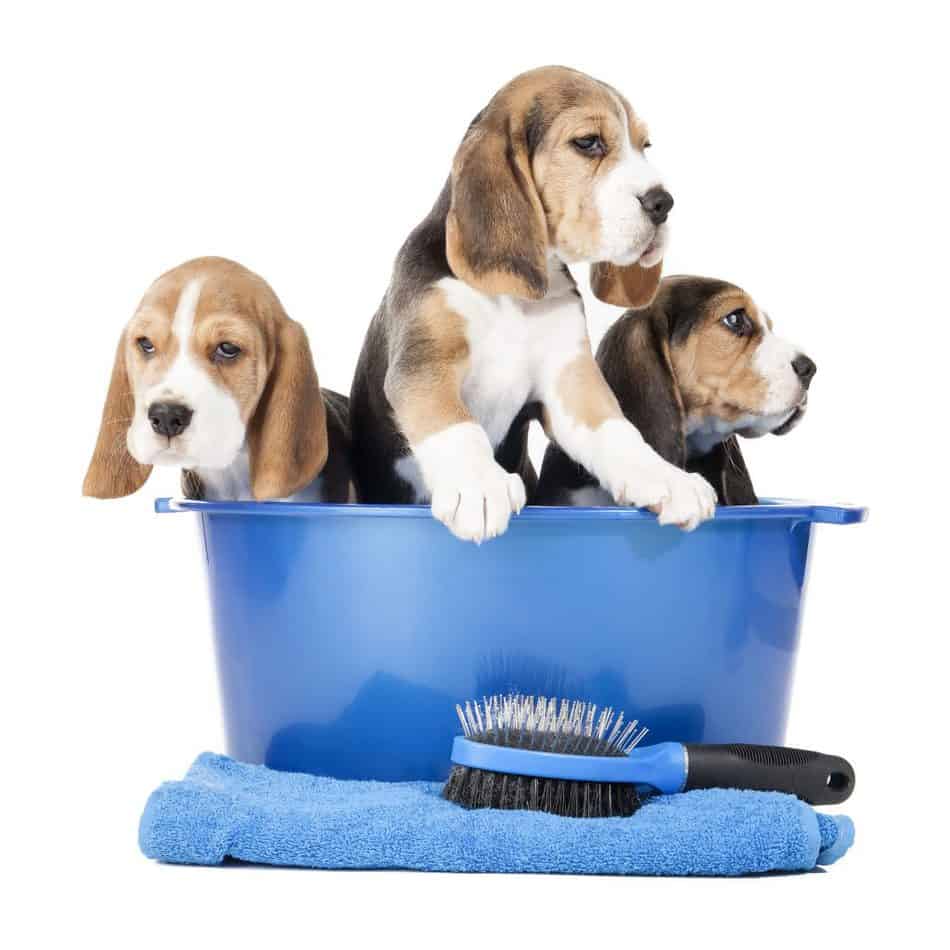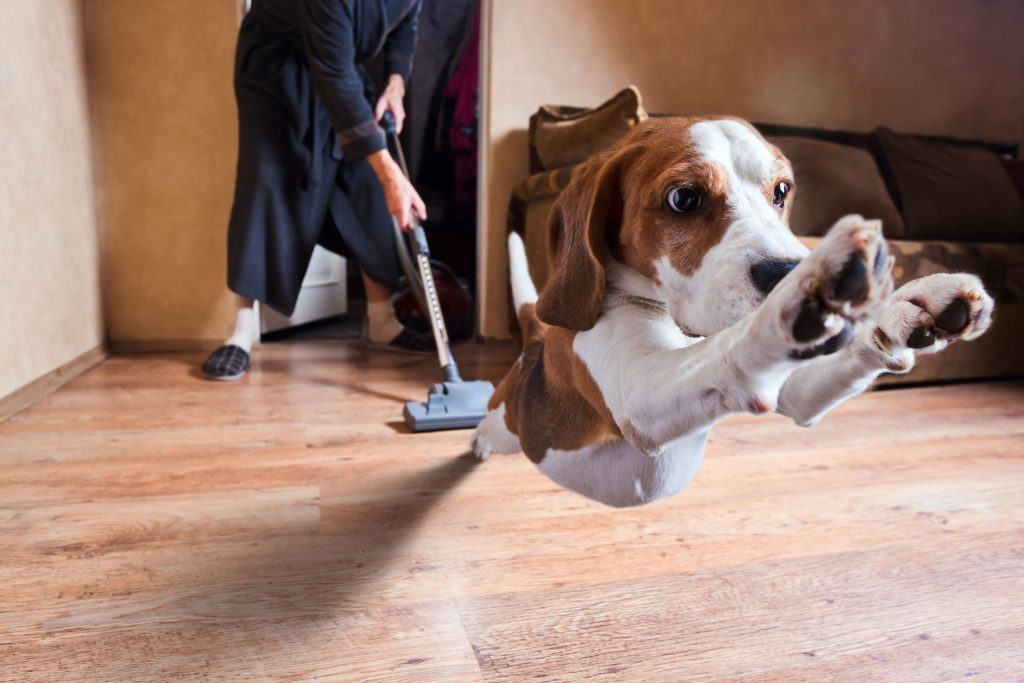Are Beagles Hypoallergenic? Tips for Families With Allergies.

Beagles are a popular pooch to have in family households. They are a super cute, playful, small dog that is great for keeping up with kids due to how energetic they are. One thing that some families need to consider before getting a dog for their family is whether or not a dog may be hypoallergenic because some people are allergic to dogs.
Are beagles hypoallergenic? Beagles are not a hypoallergenic dog. Though they may be low maintenance dogs, they still shed a pretty moderate amount and contain the protein that has been known to be the source of these allergies.
Dealing with an allergy to dogs is not a fun thing to have to work around. You have to know what dogs you can and can’t be around and trying to figure out how to cope with the symptoms and ways to suppress them. However, I have compiled a list of things you can do and look for to help those of you that are allergic!
What Determines Whether or Not a Dog is Hypoallergenic?
Most people shop for dogs that shed less and have shorter fur or hair thinking that this is the source of their allergy and will solve their allergy problem, but this is not true.
What causes the allergic reactions in people that are allergic to dogs is actually a protein in their skin, saliva, and urine.
People react when they have contact with these dogs because of coming in contact with the protein through touching the dog or being near where the dog is often. By being near or touching the dog, the person allergic to it comes in contact with the protein causing the reaction.
Hypoallergenic dogs actually aren’t a thing. However, there are dogs that have significantly fewer amounts of allergens, making them more allergy friendly. A lot of people just consider these dogs with fewer amounts of allergens to be hypoallergenic.
But be aware, just because someone tags a dog “hypoallergenic” doesn’t mean it actually is! A lot of people buy dogs with less dander and shorter hair thinking that is what makes them hypoallergenic but this is not the case.
What Can Hypoallergenic Families Do to Help with Allergic Reactions?
Now that we know what causes a dog to be allergy-inflicting and what actually makes a dog “hypoallergenic,” lets dive into what can be done to help lessen allergic reactions and symptoms when you have a dog that is causing allergic reactions.
Though the allergic reactions are caused by a protein in the dogs DNA, it is still possible to help lessen these symptoms at least. I can’t guarantee that these tips will completely get rid of the
Medical-Aide
There are a few medical things you can do to help relieve your allergy symptoms. These options are allergy medication, allergy shots, and getting your dog neutered.
Allergy medications are a common route for people seeking to rid of this problem. See a doctor about this allergy and they can help you to determine whether or not you can start using medicine to relieve symptoms.
Medicine can come in a few different forms as well. There nasal sprays (over the counter, steroid-containing, and other prescription sprays) and pills (over the counter or prescription). These methods all have their side effects but can prove to be very helpful to relieve allergy symptoms your pup may be causing.
Allergy shots are a bit more serious of a method for personal medical treatment, but they are super convenient and helpful. Usually, your doctor will try to put you on allergy medications in hopes that they will work and then they go to allergy shots if the medication just isn’t helping.
These shots fix the allergy symptoms instead of simply covering them up like the medication does. These allergy shots are usually administered every three to six months for them to continue working, but they help your body to fight off the reaction all-together.
Getting your dog neutered is usually something every dog owner does (or makes sure has been done) when they get the dog, but this has proven to help relieve symptoms and reactions as well. By getting this procedure done on your dog, it has actually proven to help the reactions and symptoms to be reduced.
Sometimes cleaning isn’t going to help alleviate allergy symptoms as much as we would like, so this medical route isn’t always a bad idea to finally find relief. Consult a doctor and see which way is best for you!
Pet-Care-Aide

There are quite a few things you can do with your pet in terms of everyday pet-care that can help to relieve your allergy symptoms as well.
These tasks include giving the dog a bath once or twice a week, brushing and wiping the dog down with a wet cloth daily, taking the dog out of the rooms you stay in the most and closing vents in that room, and keeping the dog confined outside or to a certain part of the house.
Giving your dog a bath once or twice a week will be helpful in relieving symptoms because your dog will stay super clean and there won’t be any extra dander or oils lingering on your dog’s skin or in their fur, therefor reducing the spread of the proteins causing allergic reactions.
Brushing and wiping down your dog with a wet cloth daily will have the same effect as bathing your dog frequently. When you brush and wipe down your dog, you are removing any extra hair and dander that holds extra amounts of the allergy-causing protein and reducing the amount of exposure to a minimum.
Taking the dog out of rooms that you are in the most and closing those vents is a great way to reduce your reactions as well. By removing your pup from those rooms completely, you won’t have them shedding in those rooms at all. The room will stay much cleaner and not having all of the loose dog hair and dander everywhere will eliminate exposure to that allergy-causing protein as well.
Closing the vents to that room will help to eliminate exposure as well. This may not be something we think of often, but the vents in houses circulate the same air throughout the entire house.
By closing the vents to the room, you are keeping any of the dander and loose from your dog that may be circulating in the air.
The room(s) you should close up completely from exposure by your dog should be rooms you live in the most such as bedrooms. You live in these rooms the most. You sleep, change clothes, relax, work, and everything in these rooms and it will have the best effects to make these your safe places.
Keeping the dog confined to just a certain part of the house will be super helpful as well, like eliminating exposure to bedrooms. People often confine their dogs to the back yard, the garage, or a common area in their house away from the bedrooms.
This will help to eliminate the exposure to the dander and loose hair in a large part of the house which will help to relieve your symptoms and give your body a break from trying to fight the allergy all the time.
Keeping your dog clean and brushed will ultimately help them to not shed as much hair, resulting in not as much hair and dander getting stuck in the carpet and floating around in the air. Cleanliness is
Cleaning-Aide

There are a few cleaning tactics you can use to relieve your allergy symptoms as well. These chores include vacuuming consistently and frequently, using air filters, and keeping up with dusting.
Vacuuming consistently and frequently will help to remove any loose and shed dander and hair from your dog around the house.
By vacuuming often it will help to keep not just the floors cleaner, but not having the hair and dander under all of the foot traffic in the house will prevent it from being kicked up as well and will keep it out of the air.
Using air filters is not something that a lot of people realize is even an option. They are pretty easy to find and decently priced as well. By having air filters in your rooms and running them, the air will be clear(er) of any dust, dirt, and dander your dog brought in.
Eliminating all of that junk from the air will help so that you are not breathing it in. By not breathing it in all of the time your symptoms will reduce significantly as well. It helps to lessen the exposure to these allergy-causing elements to your sinuses where the reaction often starts.
Keeping up with dusting will have the same effect as vacuuming frequently. By dusting consistently, you are cleaning any settles dander and such from the surfaces throughout the house.
Especially if paired with frequent vacuuming and air filter use, your house will be close to completely free from any extra dander, hair,
Keeping a clean house is really going to help alleviate some of your allergy symptoms. Ensuring that extra hair, dander, etc. is kept cleaned up will keep that stuff out of your carpets and out of the air, giving you some relief.
What Dogs are Considered Hypoallergenic?
“Hypoallergenic” dogs are those that shed less and produce virtually less of dander. The dander that contains the allergy-causing-proteins often comes off when a dog sheds its hair which is why both cause such reactions.
But, some breeds of dogs shed significantly less than most which helps them to be more hypoallergenic. Below, I have provided you all with a list of some of these known “hypoallergenic” dog breeds.
“Hypoallergenic” Dog Breeds:
- Afghan Hound – dignified, regular exercise and grooming needed
- American Hairless Terrier – lively, friendly, intelligent, active, regular grooming
- Bedlington Terrier – gentle, loveable
- Bichon Frise – gentle, happy, playful, doesn’t shed, regular grooming needed
- Chinese Crested – alert, playful, small, great with kids, regular grooming
- Coton de Tulear – affectionate, loyal, playful, great with kids, fluffy coat, daily brushing needed
- Giant Schnauzer – intelligent, territorial, lots of exercise, regular grooming
- Irish Water Spaniel – strong, intelligent, very active, frequent brushing
- Kerry Blue Terrier – energetic, daily exercise needed, regular grooming needed
- Lagotto Romagnolo – happy, lots of energy, affectionate, devoted, regular grooming needed
- Lhasa Apso – small, doesn’t shed, needs frequent bathing
- Maltese – brave, playful, fearless, daily brushing needed
- Miniature Schnauzer – playful and energetic, sheds little, very alert, protective, needs lots of attention, regular grooming needed
- Peruvian Inca Orchid (Hairless) – both hairless and coated and all sizes, loyal, protective, energetic, minimal grooming
- Poodle – hair not fur, smart, easy to train, very short hair, barely sheds
- Portuguese Water Dog – athletic, intelligent, loyal, regular grooming needed
- Shih Tzu – very friendly, small, lots of energy, long fur that will need brushing, doesn’t need a lot of space
- Soft Coated Wheaten Terrier – active, lots of exercise needed, great with kids, regular grooming needed
- Spanish Water Dog – lively, hardworking, protective, energetic, minimal grooming
- Standard Schnauzer – sociable, affectionate, great with kids, athletic, regular brushing needed
- Xoloitzcuintli – all sized and hair types good, calm, attentive, moderate exercise and grooming necessary
- Yorkshire Terrier – very little fur, grooming generally needed, brush every-so-often
Related Questions:
Are beagles good family dogs? Beagles are actually great family dogs. They are small and very easy to manage and maintain. They are also super energetic which is great for keeping up with and playing with little kids. They are a super affectionate dog as well.
How easy are beagles to train? Beagles are a super independent dog because they were originally bred and used for hunting. They are quite stubborn due to this and are hard to train on your own. They are much easier to train with obedience classes, however.
How bad do beagles shed? Beagles don’t shed too bad. They have short hair which makes it less noticeable. This breed of dog does grow a thicker coat for the winter, however, which means they shed a decent amount in the spring. As long as you keep up with the hair you should be just fine.

